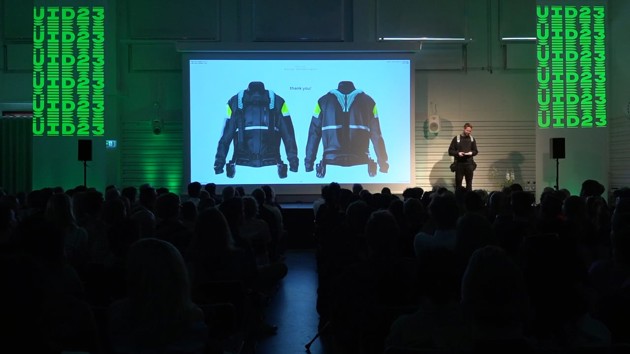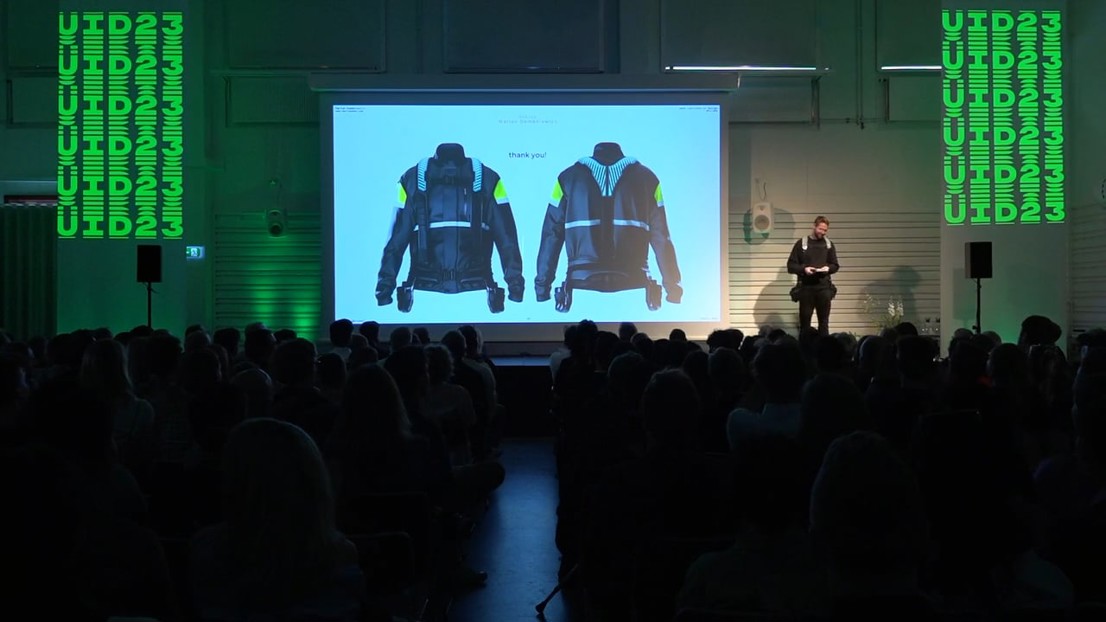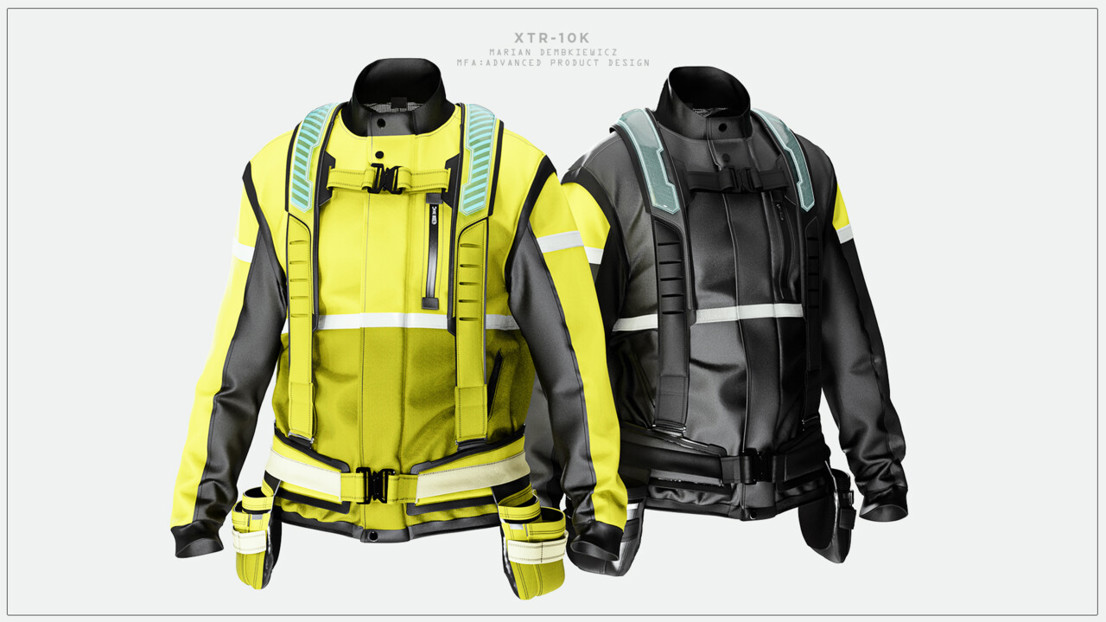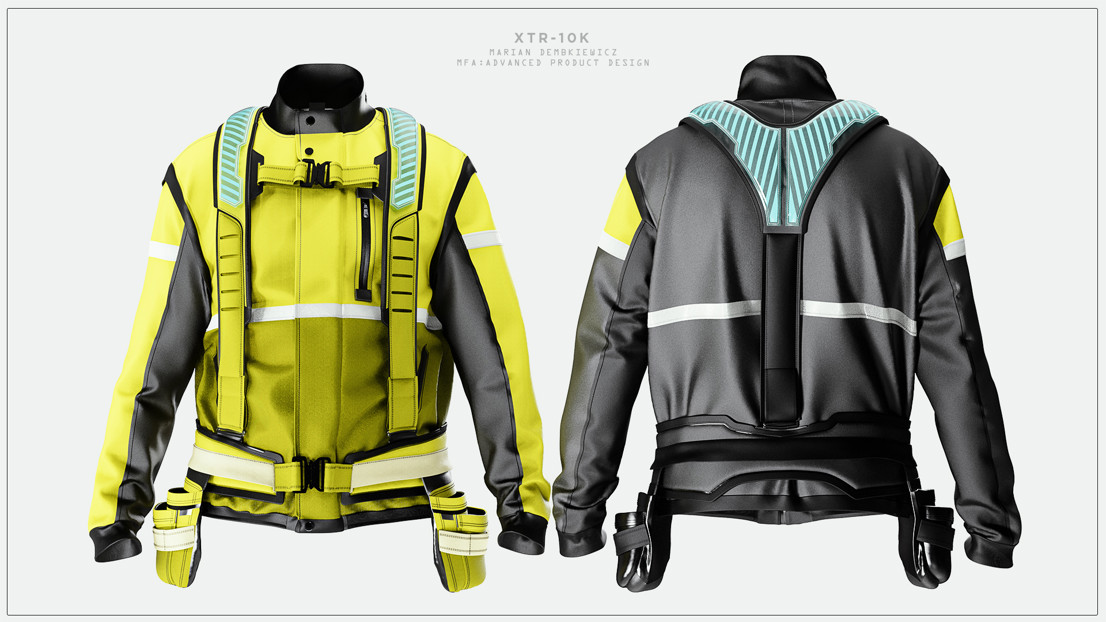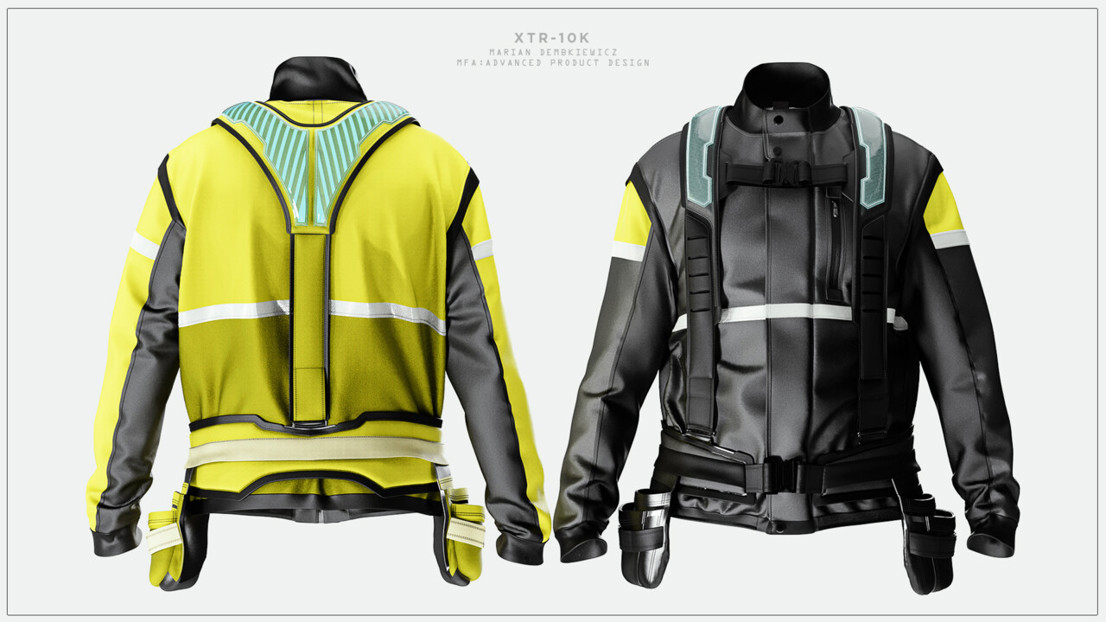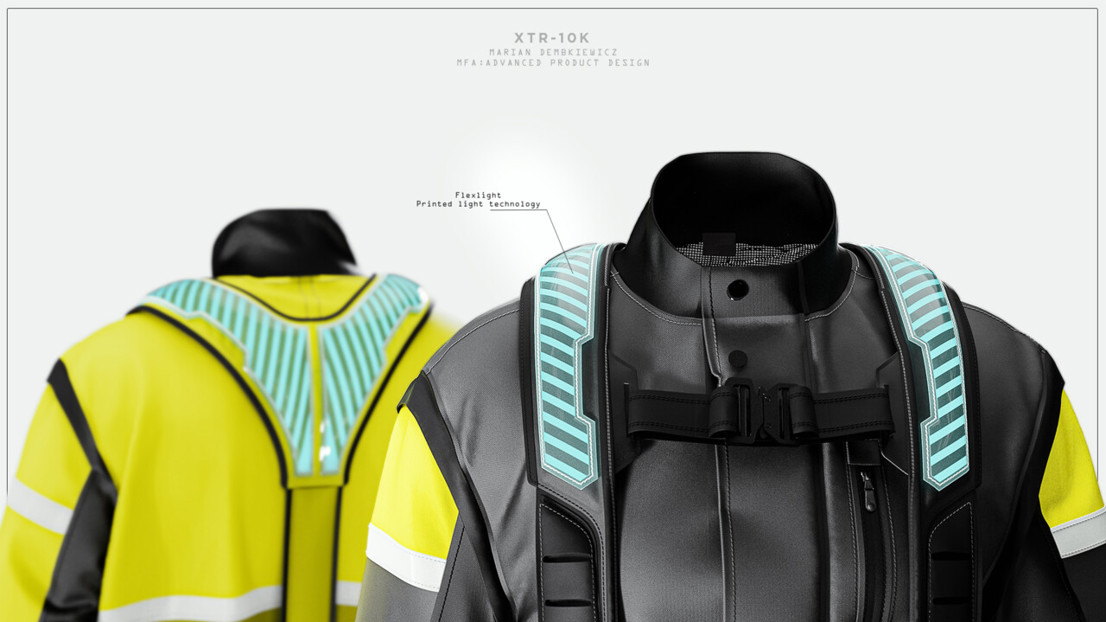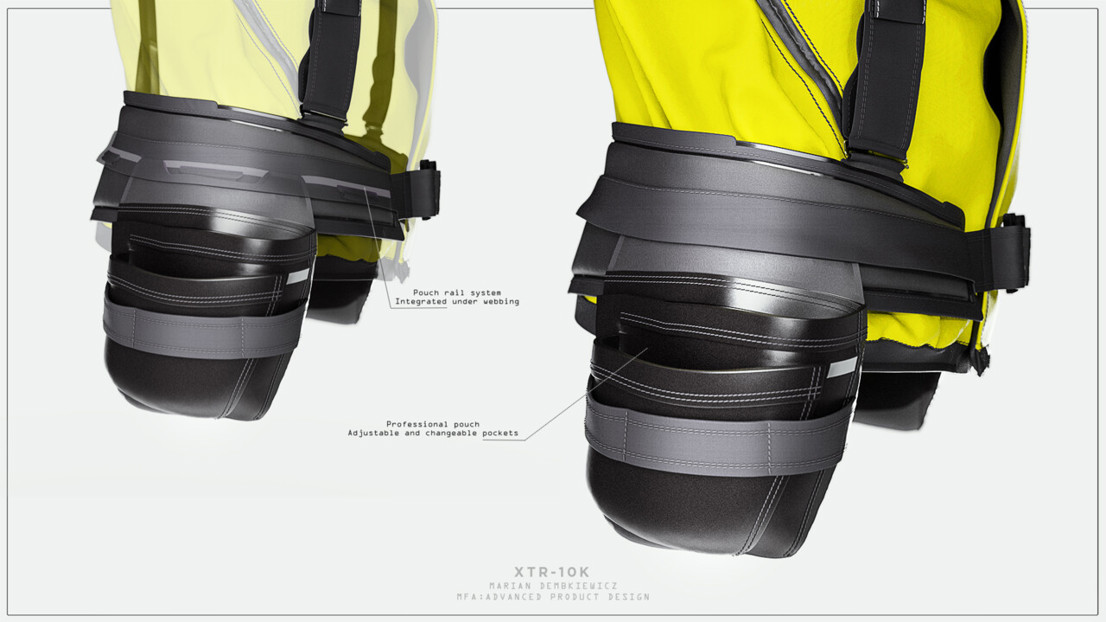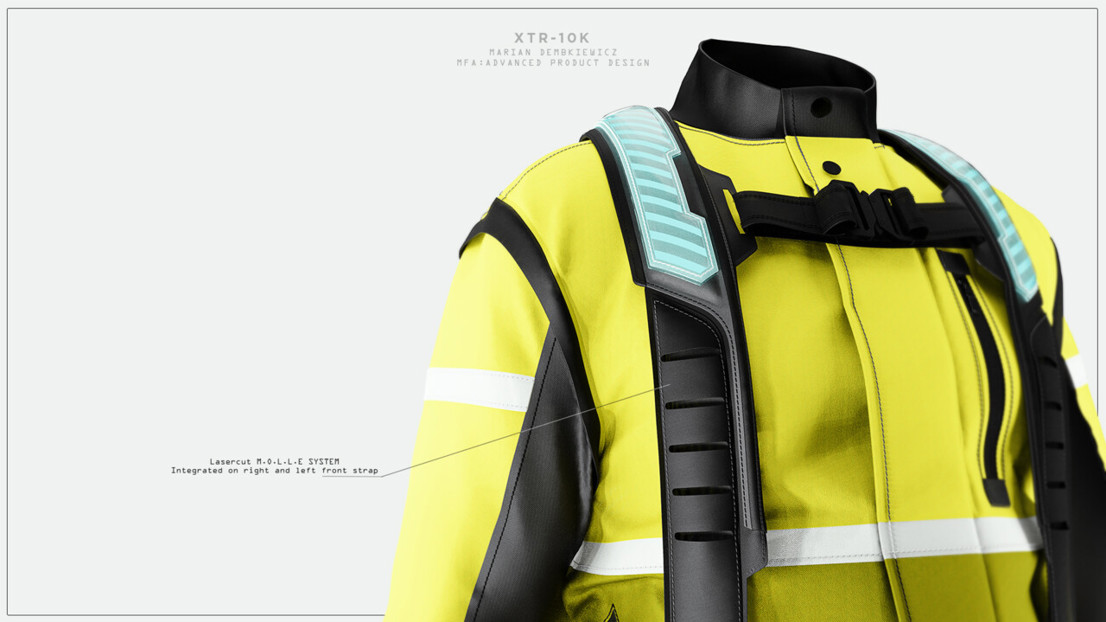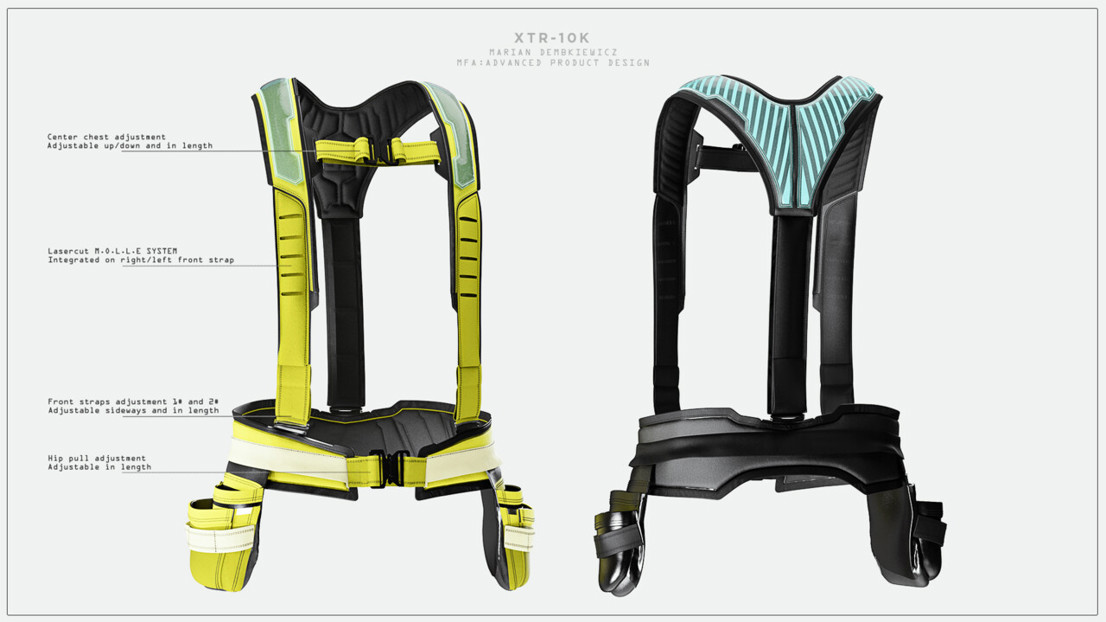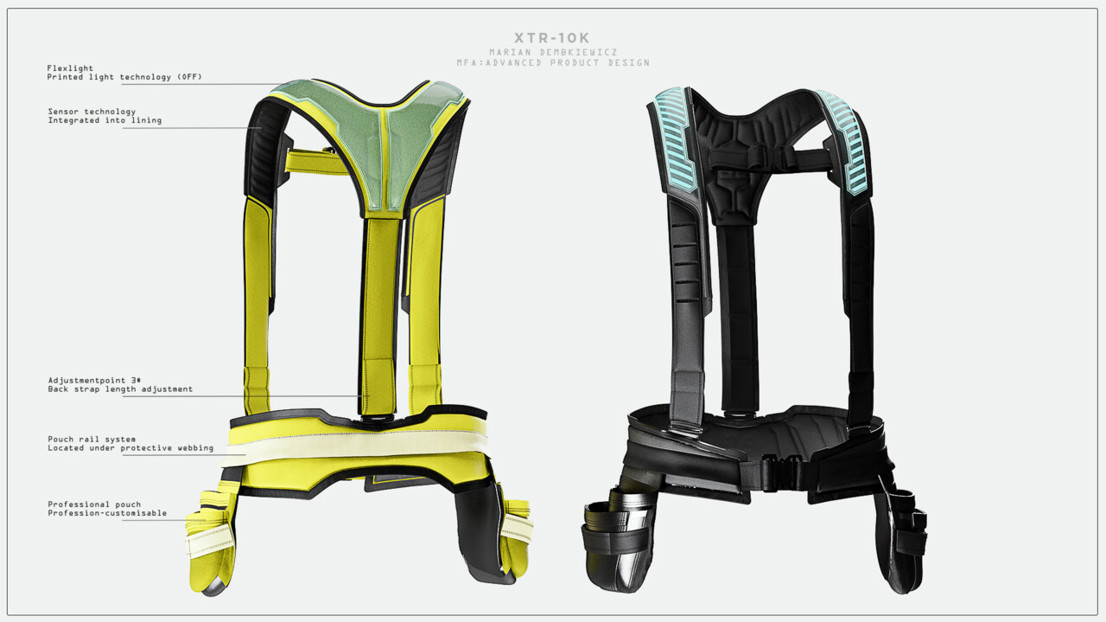Hero image featuring the XTR 10k all-round work harness and jacket in two colours ways.
XTR 10K
This project applies industrial design principles to work-wear, specifically focusing on addressing challenges related to visibility, ergonomic adjustability, and tool carrying. By employing a usercentred design approach, the project aims to provide innovative solutions for future work-wear. The central problem formulation is “How might we design a solution that is customisable to each workers unique body shape and needs with the intent of improving job satisfaction, safety and performance?”. User interviews and field research were conducted with carpenters, technicians, and electricians working in physically demanding environments to gain valuable insights into their challenges. The project outcome is a new tool-carrying belt and harness combination that allows users to customise tool placement and achieve better ergonomic fit. Additionally, the solution incorporates smart technology to enhance safety without intrusiveness. In collaboration with Snickers Workwear, this project seeks to improve industry standards and create a positive shift for labour-intensive workers.
Project information
This project explores the application of industrial design principles to apparel design, specifically focusing on work-wear. It aims to address challenges related to visibility, ergonomic adjustability, and tool carrying, considering the diverse body sizes and needs of the user groups. The work-wear industry often provides standardised solutions based on cost effectiveness, which may not cater to individual requirements. The project takes a user-centred design approach to understand the issues and provide innovative solutions for future work-wear. Additionally, it explores the integration of smart garments to enhance functionality and value for work-wear users. The collaboration with Snickers Workwear contributes to the project and its outcomes.
Method
For this project, a broad user group has been selected as the desired target group. This includes carpenters, technicians and electricians working on varying sized work sites within areas of construction, maintenance, installation and repair. The reason for choosing these three user groups comes from the fact that they are often found working in physically demanding environments, at times exposed to harsh weather conditions and require work-wear that is durable and protective. I had the possibility to reach my target user group and stakeholders directly though connections made in Umeå and Stockholm, which proved very beneficial as this was a determining step in the process that led to many great insights to go forward with. The average interview was roughly 45 minutes long, and every interviewee was interviewed between 1-3 times. Most of them took place digitally, but since two of the carpenters where in Umeå, this could be done in their workshop. The user groups targeted and interviewed cover the professions of carpenters, technicians, electricians and an artist focusing on sculpture building and muralism and is limited to these groups due to time and availability of user groups for interviewing. Aside from user interviews, field research was conducted by following two telecom technicians working on a remote location in Sweden. Telecom technicians work in physically demanding environments. They are often required to climb high towers, work in tight spaces, and operate heavy equipment. Along with this, unergonomic work positions are often paired with physically though tasks. For technicians working in unconventional work environments, improvised workspaces is more often than not the norm. In order to fulfil their job they can often be found exchanging ergonomic work positions for efficiency. There was also situations where the technicians where working in darkness and within terrible light situations. Both in terms of staying visible for the surrounding environment, as well as having proper work lightning. Lastly, tool storage and handling (or lack thereof) often led to improvised tool and gear management.
What, where, why and who?
What: A solution that improves the tool carrying capabilities of todays tool carriers from a situational adaptability, ergonomically beneficial and all-body-inclusive perspective while also exploring the potential for smart technology within the field of work wear in order to assist the user. Where: At various worksites, mines or other locations where heavy and labour intensive work is present. Why: To prevent the long term damages found in users within the field of labour intensive work and create a shift to challenge the current standards in the market. Who: Workers in fields of labour intensive work, including but not only limited to: carpenters, electricians and technicians. The central problem formulation for this project is: “How might we design a solution that is customisable to each workers unique body shape and needs with the intent of improving job satisfaction, safety and performance?”
Result
The result of the project is a new tool-carrying belt & harness combination, giving the user the possibility to adjust how and where tools are worn on the body and being able to ergonomically adjust how the tool carrier fits. All while also equipping the user with smart technology to provide a safer work environment in a non-intrusive way.
Marian Dembkiewicz

In collaboration with:

UID23 | Marian Dembkiewicz – Grad Project Presentation
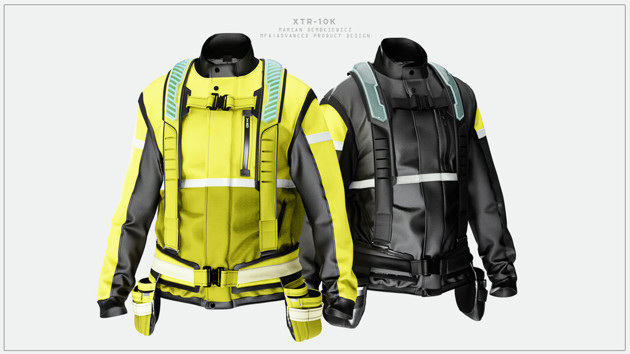
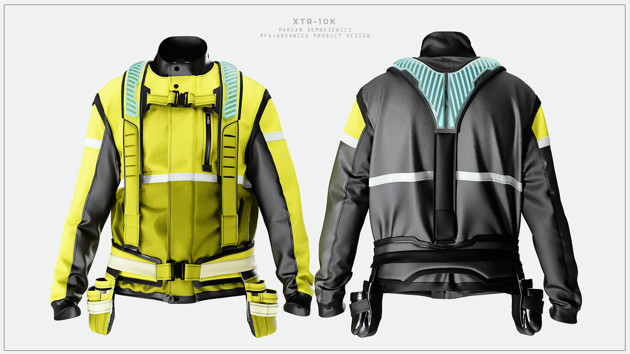
Product image of the XTR 10k all-round work harness and jacket, showing the front and back view in two colour ways.
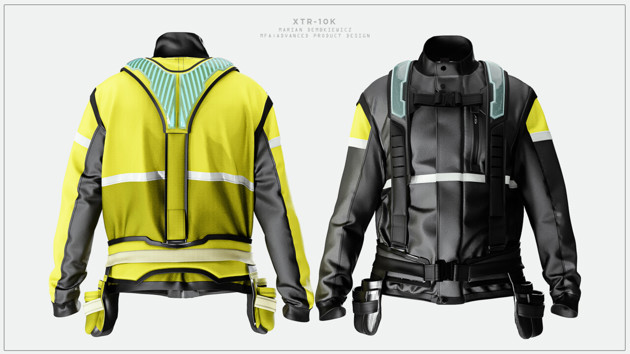
Product image of the XTR 10k all-round work harness and jacket, showing the front and back view in two colour ways.
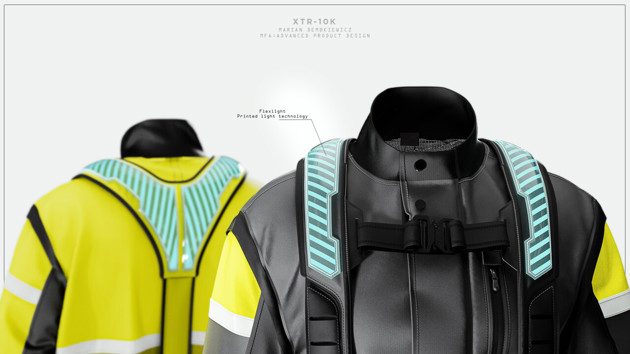
Detail shot of the smart Lightflex technology featured in the harness of the XTR 10k.
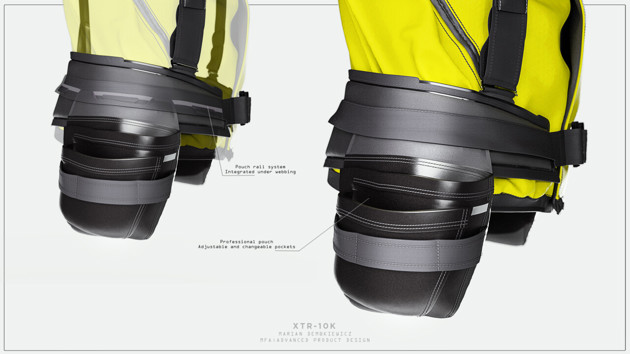
Detail shot of the pouch and innovative belt pouch rail system featured in the XTR 10k belt.
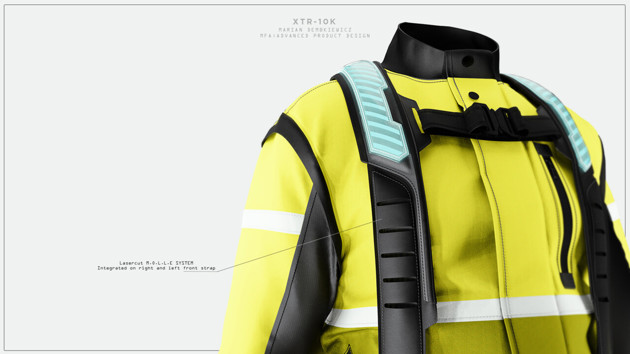
Detail shot of the front straps of the XTR 10k harness, featuring the integrated M.O.L.L.E system.
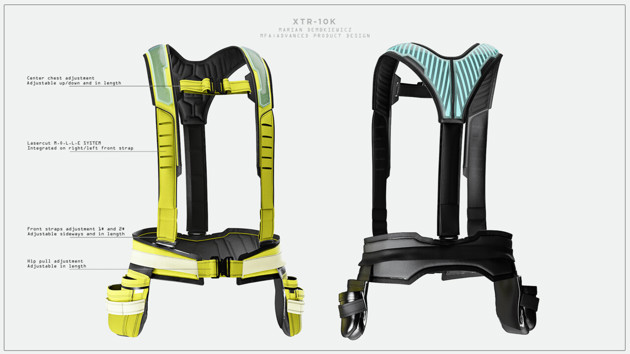
Product image of the XTR 10k all-round work harness, showing the front and back in two colour ways, with descriptive hairlines.
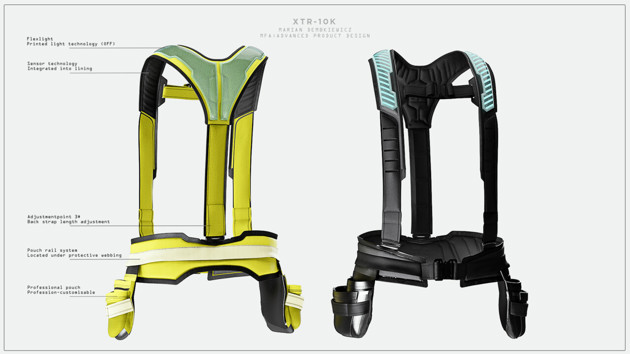
Product image of the XTR 10k all-round work harness, showing the front and back in two colour ways, with descriptive hairlines.
